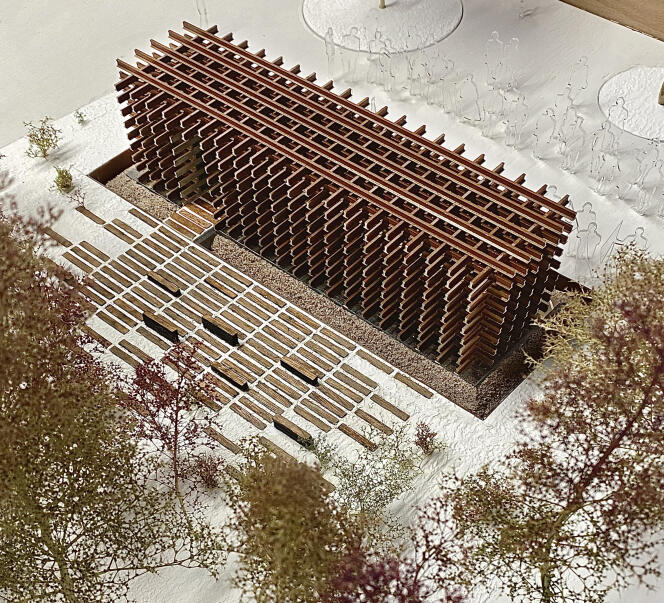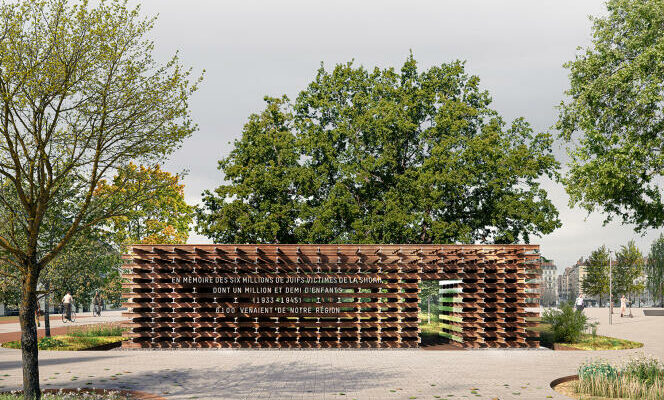They had never attempted a competition or even worked on the design of a public place. Barely eight months after creating their architectural agency, in the Bastille district of Paris, Alicia Borchardt, 29, and Quentin Blaising, 33, won the international call for tenders to create the memorial. of the Shoah, in the heart of Lyon, with a budget of 500,000 euros (financed among others by the city, the metropolis and the region). For a first, it’s a masterstroke!
The two young professionals came at the top of ninety-six applications from twenty-five different nationalities. The order was for a monument to be placed at Place Carnot, opposite Perrache station, to specifically commemorate the deportation of Jews from the Auvergne-Rhône-Alpes region and their extermination in Nazi camps. In the last square of the selected files included renowned agencies, as well as the artist Gérard Garouste.
Blaising & Borchardt Studio proposed a daring work: a rectangular block 12 meters long and 3 meters high entirely made of train rails. Precisely 1,173 meters of rails, symbolically the distance to a thousandth of the 1,173 kilometers which separate the Perrache station from the Auschwitz camp, where nearly a million Jews, including six thousand one hundred deported from the Auvergne-Rhône region- Alps, were massacred.
“A readable, accessible and solid message”
“We were not afraid of the youth. Their application received the greatest number of support from the jury. This is not an architectural gesture to show off. Their project is not ordinary, it carries the message that we want to convey by being visible, readable, accessible and solid. explains Jean-Olivier Viout, substitute for Attorney General Pierre Truche during the trial of Klaus Barbie in 1987 in Lyon. The retired senior magistrate now chairs the Association for the construction of a Holocaust memorial in Lyon.

Due to a lack of political will and funding, the project experienced eighteen years of delays before coming to fruition. In the Lyon memorial landscape, the giant sculpture of Stone watchman, representing a man holding a shield, Place Bellecour, was intended to honor the memory of the Resistance, by mentioning the names of concentration camps and those shot, but not those of the extermination camps. “It was necessary to fill a gap and clarify the different memories of this tragic period,” indicates Jean-Marie Chanon, former president of Lyon, who chaired the jury of six personalities responsible for choosing the monument.
You have 55% of this article left to read. The rest is reserved for subscribers.
